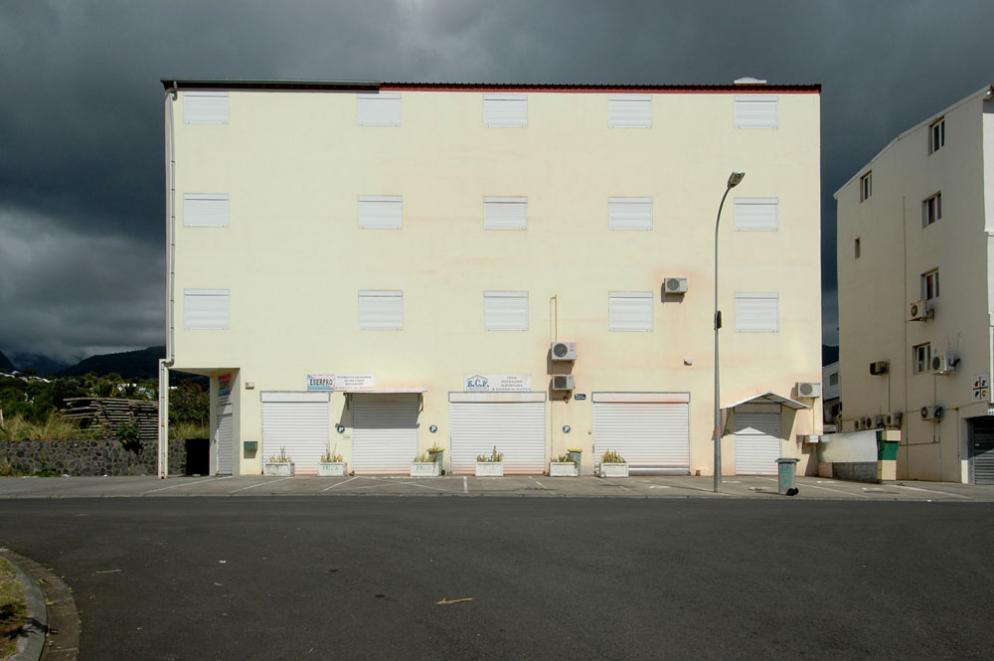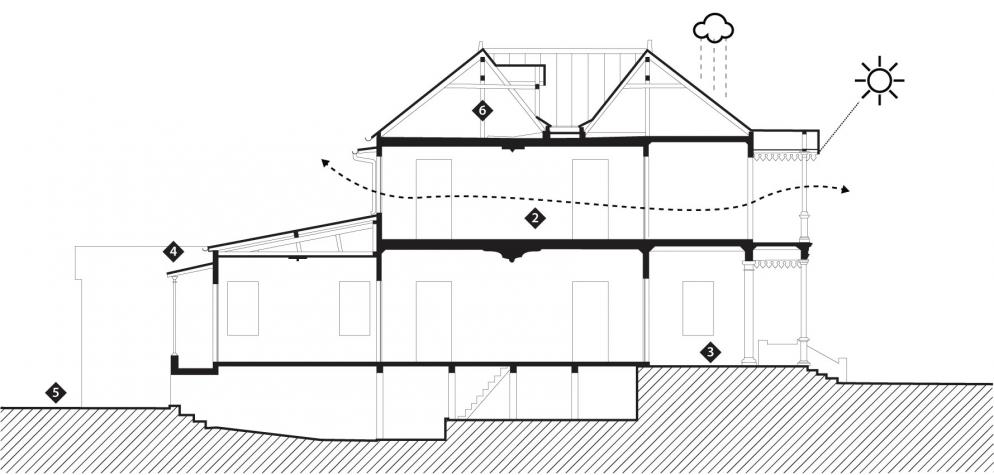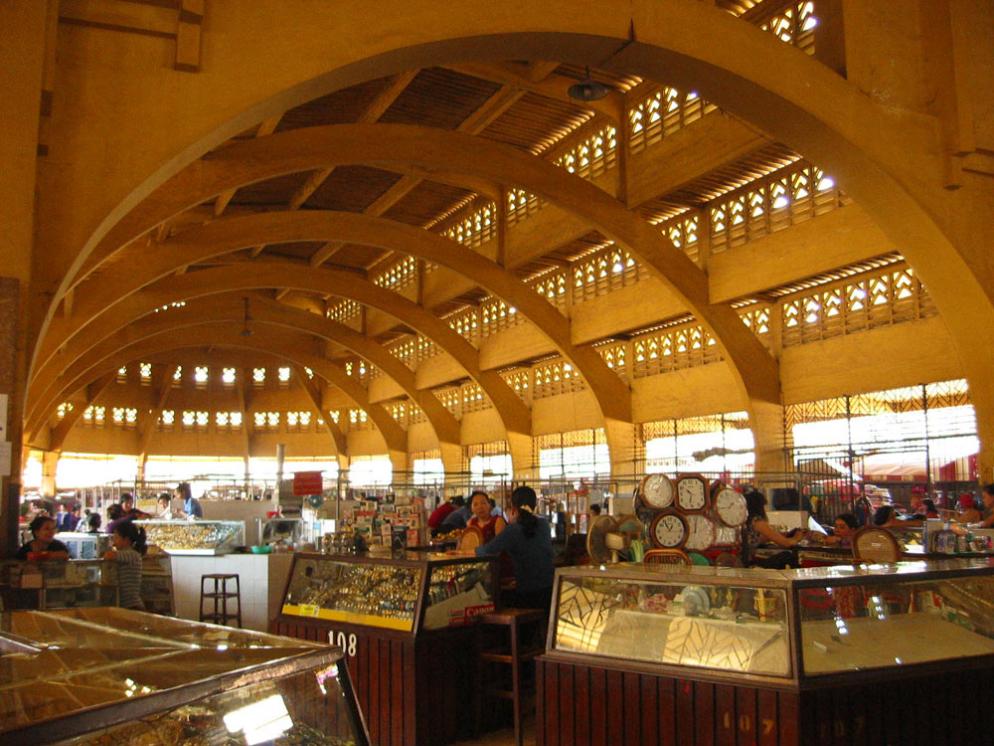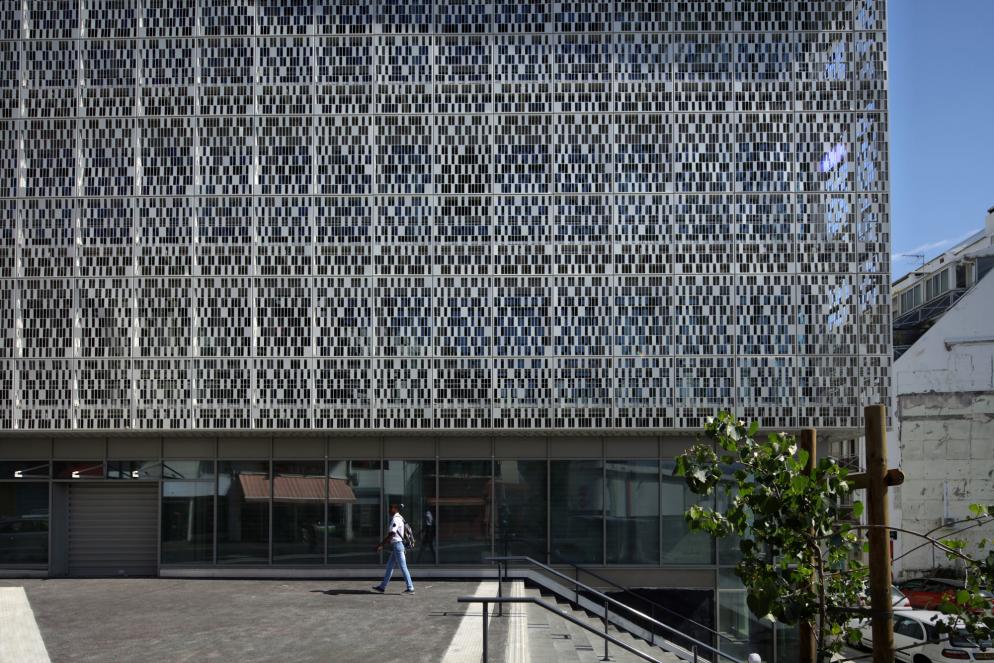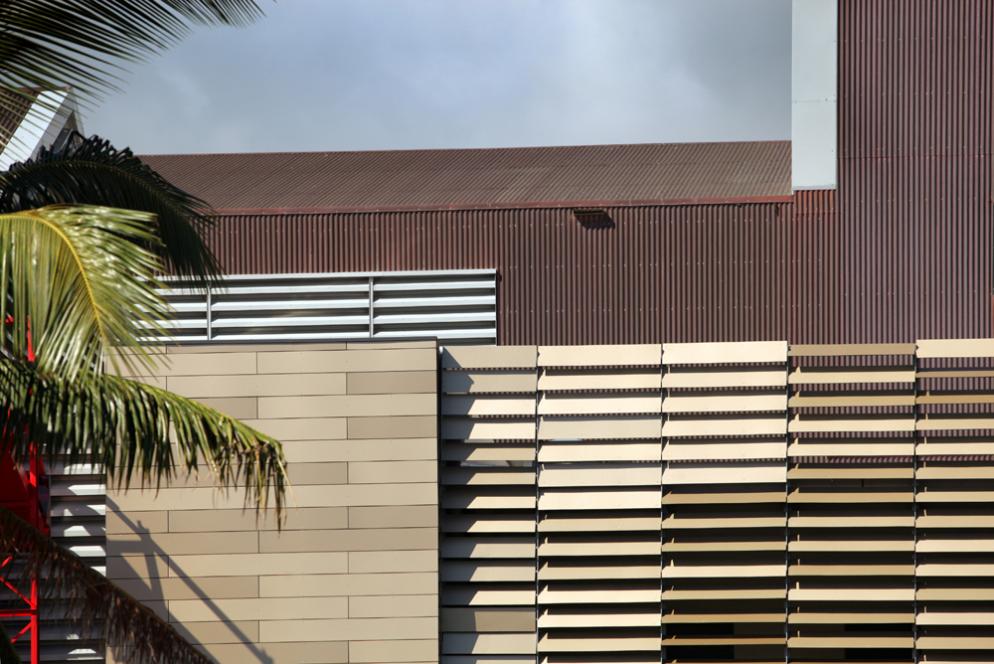Building’s skin
A building’s skin is the boundary between inside and outside.
Like the skin of a living being, it protects against rain, cold, wind, noise, pollution and so forth.
This idea seems normal, but soon becomes ambiguous when you are in the tropics. Tropical architecture has developed all over the world without this protective-skin concept, a large roof alone is sufficient to provide the minimum protection needed for everyday life.
However, in temperate regions the performance of this skin envelope is vital to fight heat loss. We insulate, create an opaque barrier between indoors and outdoors, use heating and generally do our utmost to reduce energy-consuming heat loss.
Despite vastly different contexts, this model is now copied all over the world, remodelling a high-performance “western-style” envelope – a reassuring image of modernity, technology, and perhaps even success. But if we apply this same model in the tropics, we find ourselves redefining the very essence of tropical architecture[1]. The result is opaque, smooth-sided and largely glass-walled buildings with small parallelepiped-shaped protrusions as sole relief. The introduction of air conditioning shook the very foundations of tropical architecture. It meant that buildings could be given a truly opaque skin, freeing them from their large, protective roofs.
By offering an economical solution to ever-increasing demands for thermal comfort, this small technological feature has become common in homes around the world – perhaps an inevitable response to growing requirements, combined with a desire to mimic Western architecture. And therein lies air-conditioning’s greatest strength. It allows for Western architecture in a tropical environment. A copy-and-paste of “fuck the context” now works everywhere – with air conditioning more or less concealed behind each glass wall.
It results in image-based architecture, producing tall, smooth-sided buildings that have no place in the tropics. Their highly efficient envelope together with overuse of air conditioning makes them costly, energy-hungry, and short-lived. Air conditioning is an opportunity to create a high-performance envelope and a formatted image; a building with smooth, highly-glazed façades. But all this comes at a cost – greater construction and operating costs as well as an irreversible cost to the environment – simply for a few degrees of comfort. The picture of modernity has its price - a price that can no longer be ignored in a world where energy not only costs money but also affects the very future of our planet.
Should we not think hard about the image of contemporary architecture? Architecture should fit into its immediate environment. Architecture should not ignore its context and history by simply imitating a global style ideal. Tropical architecture should draw on the traditional legacy of its forebears. Tropical architecture should develop in harmony with, and not on the fringe of technology.
Society has developed and expectations have risen, so tropical architects now have to proceed by addressing contradictory requirements: protection from the sun but letting sunlight through; protection from the wind, but allowing for natural ventilation; feeling cool all day long, but consuming little energy. This escalation of requirements – comfort, performance, and cost-effectiveness – raises questions about our current lifestyle, and prompts us to think about passive architecture.
Take the example of a traditional Creole house[2]. Existing in symbiosis with its surroundings, it offers common-sense solutions for living in an environment with extreme climatic constraints. Creole houses have wide, sloping roofs to facilitate the run-off of torrential rain. To temper strong sunlight, they filter rays through canopies, openwork transoms, and brise-soleils. To cope with extreme temperatures, Creole houses developed efficient natural cooling methods: preferring natural through-ventilation; ‘greening’ much of the immediate vicinity to improve thermal comfort. Tall vegetation casts shade on sun-exposed façades, contributing to the cooling effect and enhancing occupants’ quality of life. Houses are designed with buffer spaces to ensure thermal comfort: spacious verandahs outside are covered and can be used as living areas where indoors and outdoors meet, making an intelligent contribution to the building’s thermal comfort.
Simple but effective designs fulfil architecture’s function as a shelter, allowing control of energy consumption while providing comfort[3]. This return of tried and tested common sense methods offer an intelligent response to architectural design in a tropical environment.
Faced with the global challenges of climate change, is there not another way to design? After undergoing a 360° change following the arrival of air-conditioning units, might not the urgent threat of global warming be an opportunity to rethink tropical architecture theory? Regions in the tropics have already pioneered energy transition, and every year they present greener, more thermally efficient and sustainable urban projects and buildings[4].
Now let’s take a step back from our earlier statements. Society is changing and so is the environment. Some parts of the world are already experiencing these shifts. Global warming is now an inevitable reality to be taken into consideration with contemporary architectural projects, for, in 20 years’ time, such projects will be in areas potentially several degrees warmer or undergoing a change in climate topology.
Incorporating these considerations into contemporary projects while drawing on experience in tropical regions – both their mistakes and successes[5] – leverages established expertise and continues to give it serious consideration while remembering that energy efficiency is now a key component of our architecture.
We find this common sense being used in traditional Creole houses and serving as a basis to define the foundations of bioclimatic architecture. Such methods can be deployed in any region prone to global warming. There are four key concepts: CONTEXT, INTERFACE, ENVIRONMENT, MATERIALS.
Passive construction can be explored through each of these areas.
- CONTEXT_ by carefully studying the resources available for a project as well as the site’s bioclematic potential, available resources – wind, sun, water – can be optimised in the architectural treatment of a building.
- INTERFACE_ by offering façades that filter, breathe, and live with their environment, the envelope becomes porous. It protects from the sun but allows sunlight through. It protects from the wind but allows natural cooling.
- ENVIRONMENT_ by making use of the surroundings to design a building that combines quality of life with respect for the site and landscape.
- MATERIALS_ by selecting long-lasting, robust, and easily-maintained materials for a sustainable architecture in the face of change.
These days, architects have the solutions to build the future, while anticipating ever-increasing changes. Here at the World Congress of Architects we are discussing change and emergencies. Changes are already underway, and, confronted with the effects of global warming, tomorrow’s emergencies can be avoided today by anticipating the damage they will cause, making use of expertise from regions that have already experienced such extreme conditions, and adapting to the image climate change has on our buildings.
Architecture no longer has the luxury of remaining passive and, aware of accelerating change, it must demonstrate a progressive attitude focusing on bioclimatic design principles.

